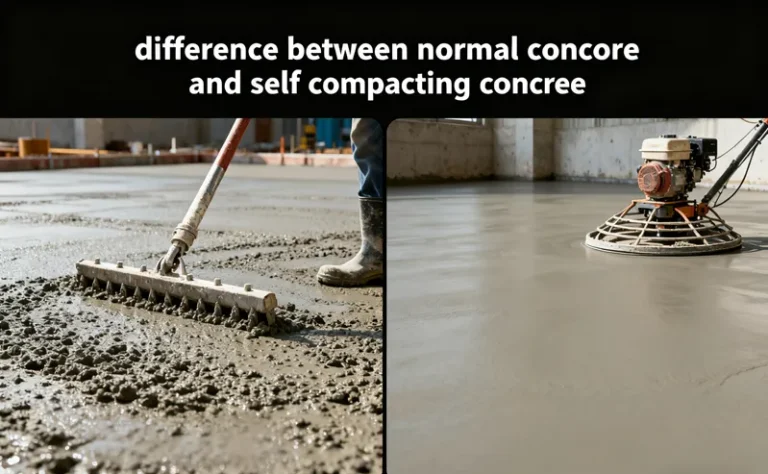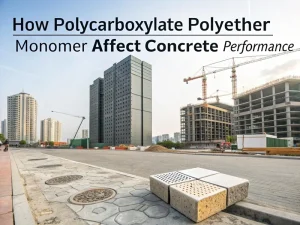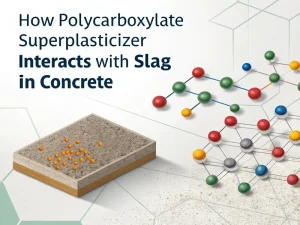Blog
Concrete is the backbone of a building, but not all concrete works in the same way. For example, there are significant differences between self compacting concrete (SCC) and ordinary concrete in terms of on-site mixing, pouring, and construction methods. Although ordinary concrete has been the most common for decades, self compacting concrete has also had a huge impact on the modern concrete industry by eliminating the need for mechanical compaction.
This guide will provide a clear, side-by-side comparison from the core definition to the final application, helping you understand the difference between normal concrete and self compacting concrete.
Normal concrete, also known as “traditional concrete”, is a mixture of cement, aggregates (sand, gravel), water, and sometimes basic additives (such as plasticisers). After pouring, it is necessary to use mechanical vibration (using a vibrating rod or template vibrator) to remove the internal air, compact the mixture, and fill it into each candle of the template.
self compacting concrete is a high-performance mixture that does not require any external vibration. It can only rely on its own gravity, flowing and filling the template like a viscous liquid, and automatically expelling air during this process, achieving self-compaction.
Performance of self compacting concrete:
SCC was developed in Japan in the 1980s to address labour shortages and improve the durability of complex structures. Nowadays, it is the preferred choice for high-rise buildings, prefabricated components, and complex building designs.

Not every project requires SCC; NC is still an ideal choice for simple, low-complexity work. Here’s how to choose based on your project type:
This is a common misconception. Yes, in terms of material unit price, the price of SCC per cubic meter is indeed not as favourable as that of NVC, as it requires more cementitious materials and expensive high-performance additives.
However, the true cost needs to be viewed from the perspective of the entire project:
Taking all these factors into consideration, in many projects, the overall cost of using SCC may be relatively or even equal to that of other methods, while also achieving a higher engineering quality.
The difference between normal concrete and self compacting concrete is like the difference between automatic transmission vehicles and manual transmission vehicles. Both can guide you to your destination, but an automatic transmission provides a more relaxed, smoother, and less reliant driving experience.
normal concrete is a proven industry mainstay, and it is still an economical choice for standard, simple, and efficient application scenarios.
Self compacting concrete coating is a high-performance solution designed to meet the complex, high-quality, and high-efficiency requirements of modern architecture.
By understanding these differences, you can select specific solutions that align with your project goals, saving time, money, and ensuring structural durability.

How Polycarboxylate Polyether Monomer Affect Concrete Performance
Blog How Polycarboxylate

How Polycarboxylate Superplasticizer Interacts With Slag In Concrete
Blog How Polycarboxylate